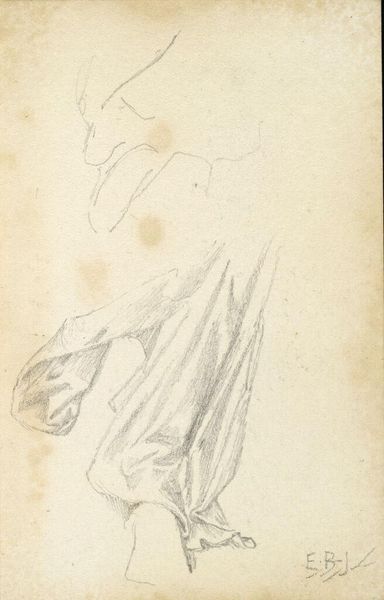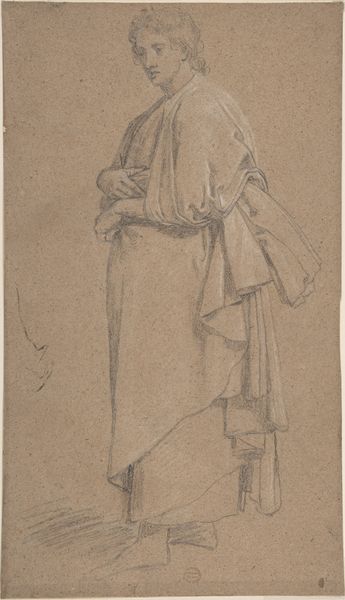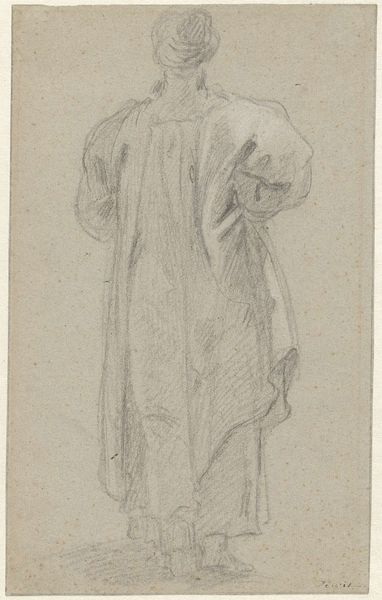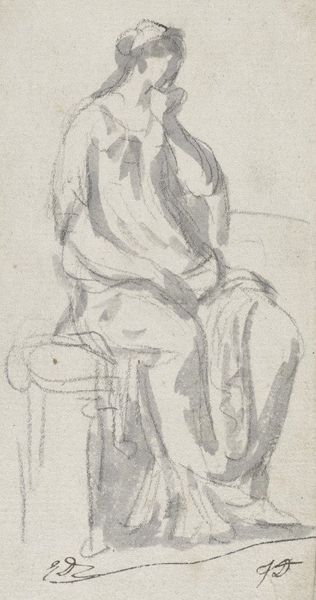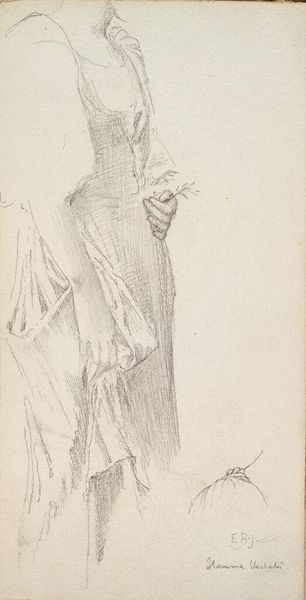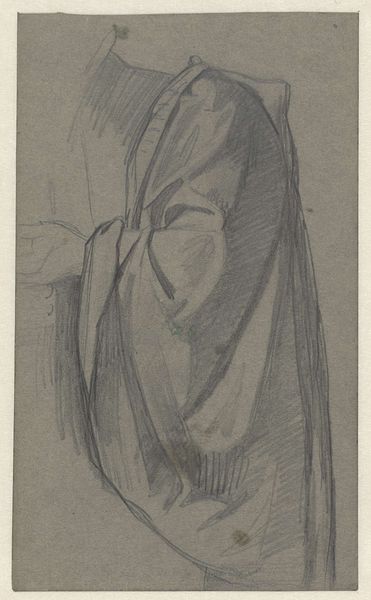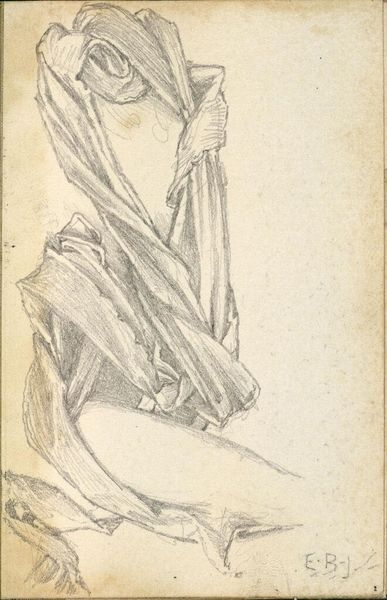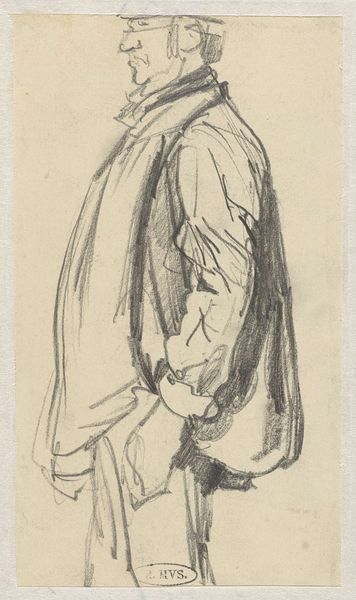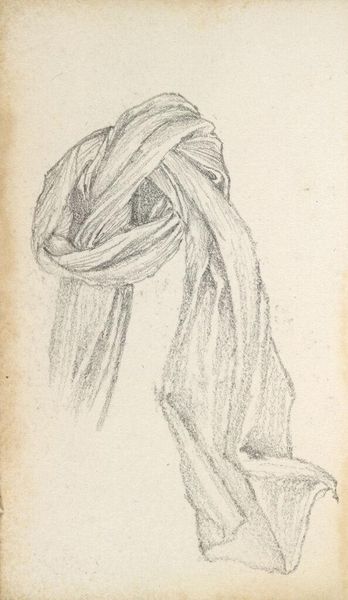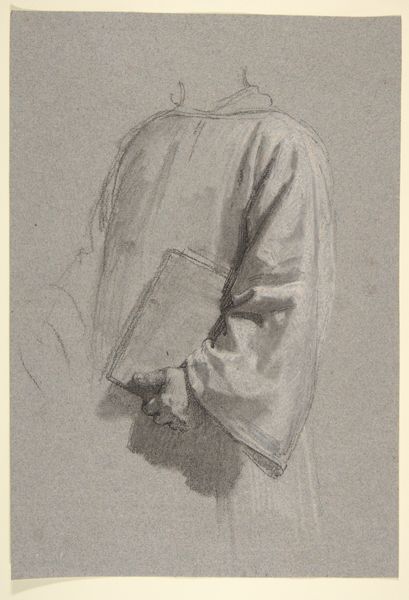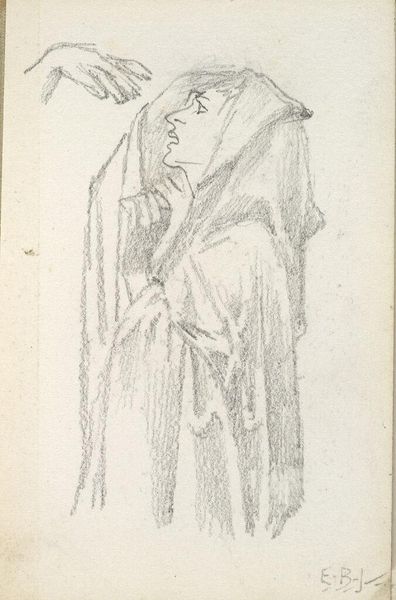
Drapery Study with Foot; verso: Right Foot c. 19th century
0:00
0:00
Dimensions: 13.4 x 9.4 cm (5 1/4 x 3 11/16 in.)
Copyright: CC0 1.0
Curator: Gazing at this delicate pencil sketch, I immediately sense a presence shrouded in mystery. Editor: It is interesting you say that. This study, "Drapery Study with Foot; verso: Right Foot" by Edward Burne-Jones at the Harvard Art Museums, is a fragment. But the fragment, as we know, carries its own narrative weight. How does this incompleteness speak to you? Curator: There's a vulnerability here, a sense of unveiling. The folds suggest a hidden form, like secrets whispered in fabric. It feels intimate, like a private moment captured. I am very drawn to it. Editor: And Burne-Jones, of course, was deeply embedded in the aesthetic and social currents of his time. One might also see this study as a reflection of Victorian anxieties surrounding the body, particularly the female form, concealed yet suggested. Curator: Yes, perhaps a tension between revealing and concealing. And that foot—it grounds the ethereal quality of the drapery, making it human, tangible. It really brings the human element into the piece. Editor: Precisely! A reminder that even the most idealized forms are rooted in lived experience. Seeing art through different lenses helps expand our understanding. Curator: Indeed, and allows us to appreciate how even the smallest, seemingly incomplete sketch can hold such power. Editor: Absolutely. Art invites us to question, to interpret, and to discover new layers of meaning within ourselves.
Comments
No comments
Be the first to comment and join the conversation on the ultimate creative platform.

